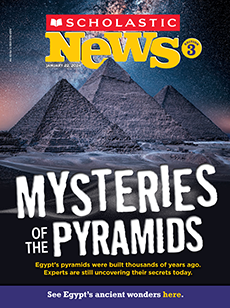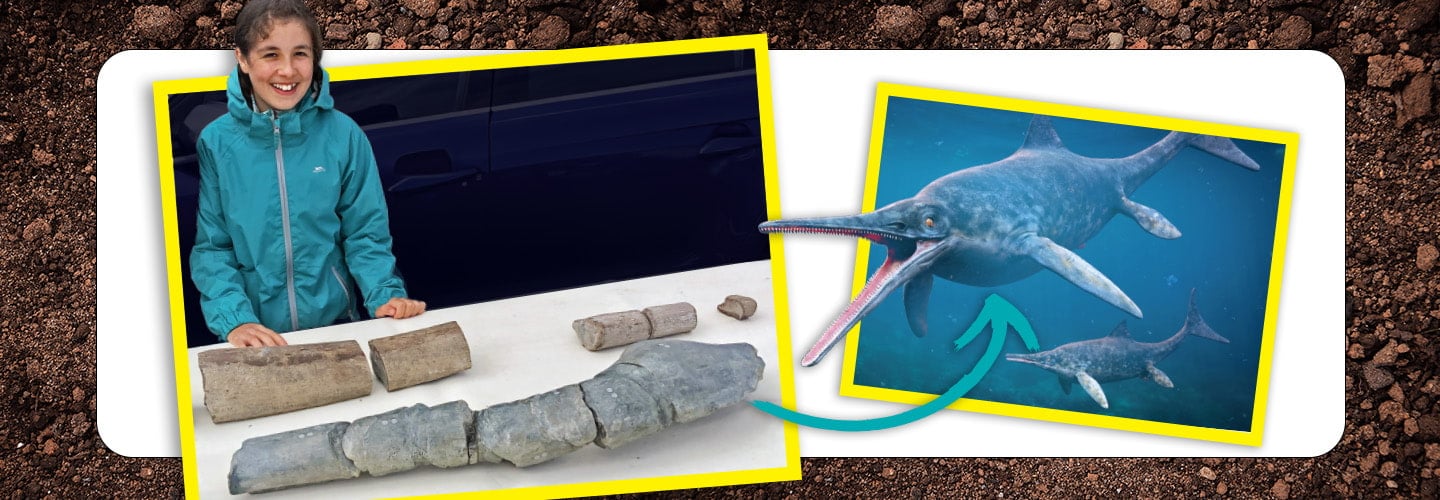Jim McMahon/Mapman®
Ruby Reynolds was on the hunt. It was May 2020. The 11-year-old and her dad had gone to the beach near their home in Somerset, England, to search for fossils.
Soon after arriving, they spotted a 4-inch-long piece of bone on a rock. Ruby’s dad stopped to examine it while Ruby continued to search. Suddenly, another piece of bone caught her eye. This one was twice as long.
Ruby didn’t know it then, but she and her dad had just uncovered part of an ichthyosaur (IK-thee-uh-sor). The fossils belonged to the largest ocean reptile ever found!
Ruby Reynolds was on the hunt. It was May 2020. The 11-year-old and her dad had gone to the beach near their home in Somerset, England. They wanted to search for fossils.
Soon after arriving, they spotted a 4-inch-long piece of bone on a rock. Ruby’s dad stopped to examine it. Meanwhile, Ruby continued to search. Suddenly, another piece of bone caught her eye. This one was twice as long.
Ruby didn’t know it then, but she and her dad had just uncovered part of an ichthyosaur (IK-thee-uh-sor). The fossils belonged to the largest ocean reptile ever found!

